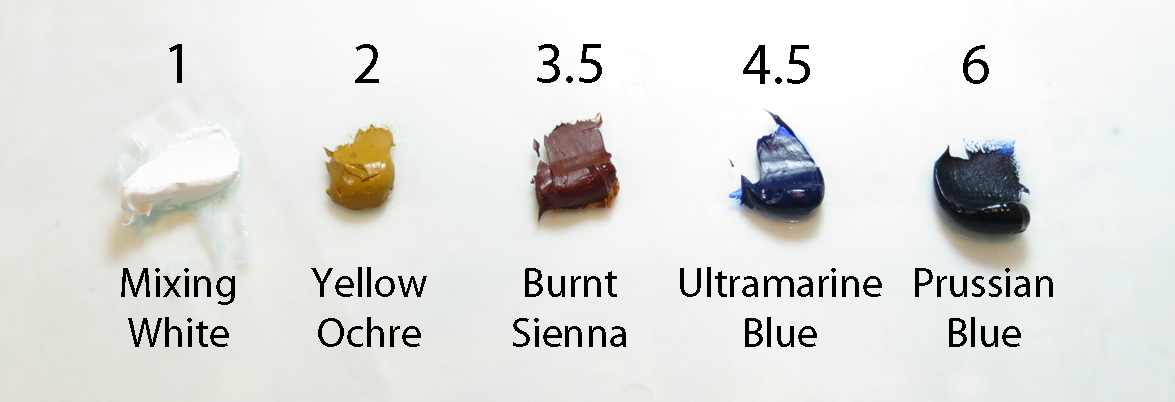Gary showed me this simple method for judging values in my painting. He uses an eleven step value scale, much like Ansel Adams’ Zone System. Gary’s scale has six primary values, numbered 1 through 6, and five half-steps that lie in between. His insight, which seems obvious in retrospect, is that you can use standard palette colors, straight from the tube as examples of values on the scale. The picture below shows five of the standard palette colors with their positions on the value scale.
In a typical painting,
- White will be reserved for specular highlights.
- Prussion Blue will be reserved for the darkest darks.
- The shadow values will start at Burnt Sienna.
This means the bulk of the mid tones will have values in the narrow range between Yellow Ochre and Burnt Sienna. Mid tones are important – they make or break a painting – but they are hard to nail because they occupy such a narrow portion of the value scale.
Gary recommends figuring out the mid tones by process of elimination. Start with the knowns, like the blackest blacks in the shadows and the whites of the specular highlights. Then work your way up out of the darkest shadows towards the mid tones. Once your figured out the shadows and the highlights, all that is left is the mid tones, and by this point, you have a lot of paint on the canvas to help you make judgment calls.
Gary also stressed the importance of using the entire value scale in order to make the painting more interesting. It doesn’t matter whether the scene is light or dark – you use the entire range. If it is a night scene, streetlights and stars will be pure white, and the moonlit mid tones will be blues with values between Yellow Ochre and Burnt Sienna. If it is a sunny day in White Sands, New Mexico, the glint of the sun will be white, and the sunny sand will be made up of mid tone grays with values between Yellow Ochre and Burnt Sienna. In both cases, the shadows will start at Burnt Sienna and go all the way to Prussian Blue.

